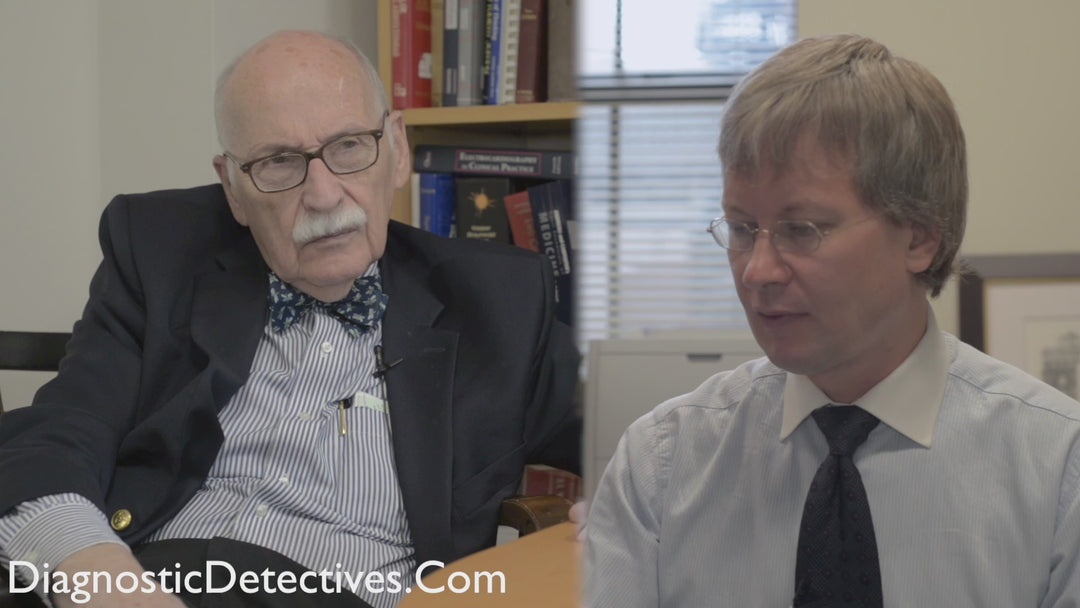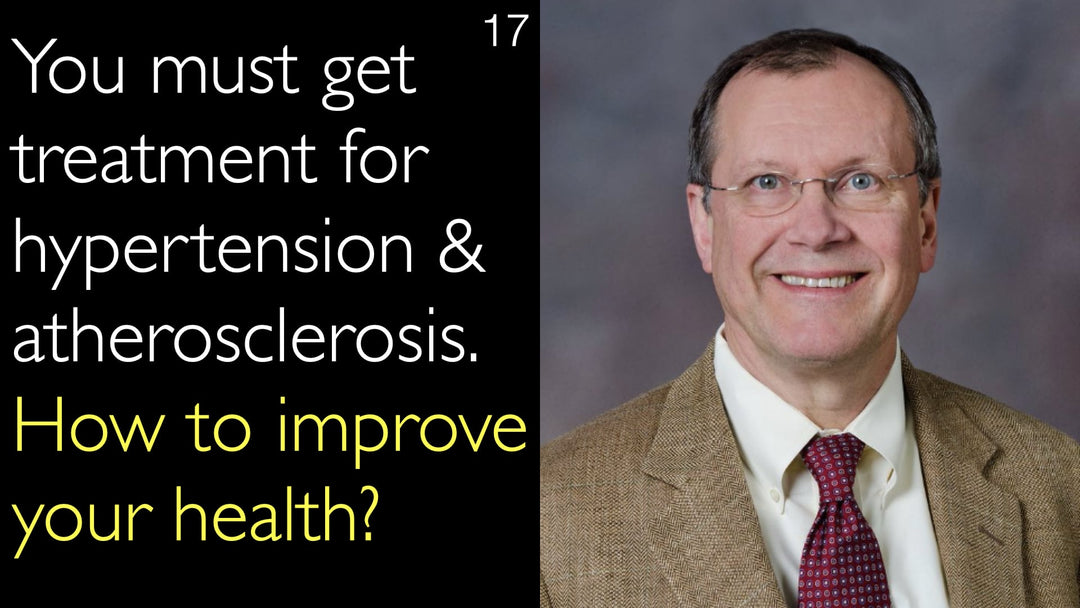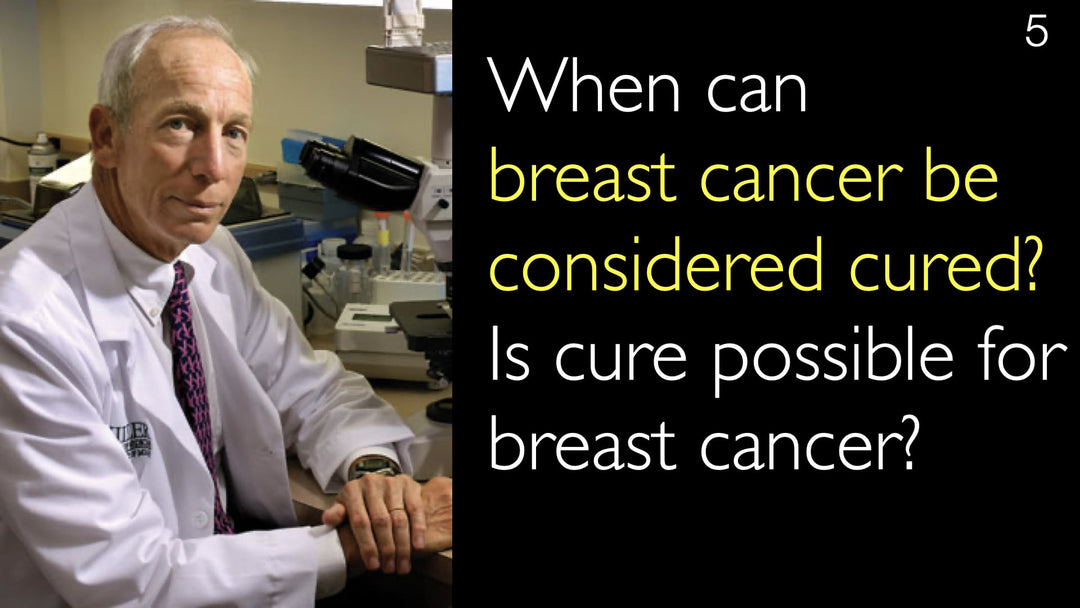Leading expert in clinical medicine and medical education, Dr. Marshall Wolf, MD, explains the essential role of the physician in modern healthcare. He emphasizes the primacy of the Clinical Method over technology. Dr. Wolf details a step-by-step diagnostic process that begins with human interaction. He advocates for a balanced approach where technology serves clinical judgment, not replaces it. This method ensures accurate diagnosis and preserves compassionate patient care.
The Clinical Method: A Human-Centric Approach to Modern Medical Diagnosis
Jump To Section
- The Human Element in Medicine
- The Clinical Method Explained
- Technology's Proper Role in Diagnosis
- Common Diagnostic Mistakes to Avoid
- A Practical Diagnostic Example
- Full Transcript
The Human Element in Medicine
Dr. Marshall Wolf, MD, begins by addressing the core human aspect of patient care. He notes that patients often arrive frightened or in denial about their health problems. A physician's first duty is to recognize and respond to this emotional state. This human connection forms the foundation of the entire diagnostic and treatment process.
The Clinical Method Explained
Dr. Marshall Wolf, MD, introduces the Clinical Method as the cornerstone of effective medical practice. This systematic process starts with the patient's chief complaint and history. The physician then formulates several diagnostic hypotheses based on the initial story. A focused physical examination follows, which helps to refine these potential diagnoses. This method prioritizes critical thinking and clinical acumen before any technology is employed.
Technology's Proper Role in Diagnosis
Dr. Marshall Wolf, MD, clarifies that technology is not the enemy of good medicine but a powerful tool. He states that technology provides solutions that were unimaginable decades ago. Its correct use comes after the Clinical Method has narrowed the diagnostic possibilities. Technology should be used to confirm or rule out specific conditions identified through history and physical exam. This ensures tests are targeted, efficient, and medically necessary.
Common Diagnostic Mistakes to Avoid
A critical error many physicians make is reversing the proper diagnostic sequence. Dr. Wolf observes that some clinicians move directly from a chief complaint to ordering diagnostic tests. This technology-first approach is backwards and can lead to misdiagnosis and unnecessary procedures. It bypasses the essential steps of hypothesis generation and clinical examination. Dr. Anton Titov, MD, and Dr. Marshall Wolf, MD, agree that thinking must always come before using gadgets.
A Practical Diagnostic Example
Dr. Marshall Wolf, MD, provides a concrete example to illustrate his point. When a patient presents with chest pain, the differential might include pneumonia or chest wall pain. A physical exam can often differentiate between these conditions without any imaging. If uncertainty remains, a simple chest X-ray may be the next appropriate step. This is in stark contrast to immediately ordering advanced imaging like a CT or MRI scan, which is often unnecessary.
Full Transcript
Dr. Anton Titov, MD: One of the goals in this project is to highlight the primacy and the value of humans in medicine. Our goal is to provide the antithesis to the growing public's perception that doctors have become servants of technology and nothing much else.
How do you think about the physician's place in the current technology-driven world? How to promote the value of humanity and compassion in modern medicine? How to get the public to understand that value?
Dr. Marshall Wolf, MD: You are bringing up two issues. One topic is about the human aspect. It is important to pay attention to what the patient is going through emotionally when you deal with them.
The fact is that they may be frightened. They may have a large amount of denial in dealing with their problem.
The second issue is the balance between old-fashioned clinical medicine and new technology. I don't see those as competing. I have been around a long time. I have seen new science and technology provide for patients something that I couldn't have provided when I was starting in medicine.
I have seen technology help in curing patients or helping patients. I do think that the important thing is this: the physician's first job, when a patient comes in, is to decide, "Is the patient sick or not?"
Sometimes patients are worried about something that isn't too important. It is not a health hazard. You have to decide that.
Then, once you have decided that they have a problem, you have to use history to try and figure out what might be going on. I like to talk about the Clinical Method.
The patient comes in with a complaint. You listen to their story. You then have several hypotheses about what might be going on.
You then talk further to the patient to try to define those hypotheses. Based on your hypotheses, you do a focused physical examination. This may change your hypotheses.
Then, based on your history and physical exam, you say, "I'm worried about A, B and C." That point is a time when you involve technology to try and figure out, "Is it A, B or C?"
The problem is, a lot of physicians start out in a wrong way. The patient gives the chief complaint, then physicians immediately start with the technology diagnostic tests.
That is the wrong way to do things. It is backwards. It is thinking first, then using the gadgets later.
Yes, you may be trying to figure out if the patient has pneumonia or chest wall pain. An X-ray may be useful if a physical exam doesn't answer the question. For that problem, usually you don't need a CT or MRI.
Often, if you do a physical exam, you can figure out if they have pneumonia without a chest X-ray.







